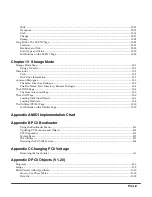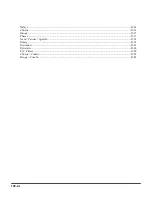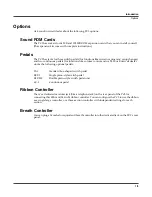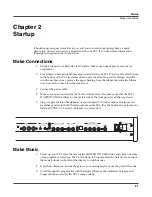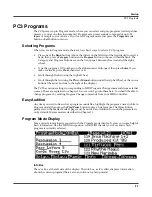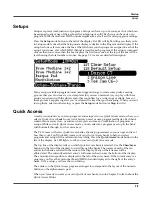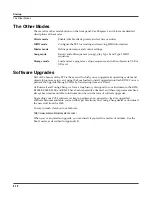
Introduction
VAST Synthesis
1-3
VAST Synthesis
The PC3’s Variable Architecture Synthesis Technology (V.A.S.T.) lets you build sounds from
realistic instrumental samples and sampled synth waveforms—then modify the nature of those
sounds through a wide variety of digital signal-processing (DSP) functions. The PC3 also
generates its own synth waveforms, which can be combined with the samples or used on their
own.
While many other synthesizers may offer a fixed set of
DSP
tools (typically filtering, pitch, and
amplitude modulation) the PC3’s Variable Architecture lets you arrange a combination of DSP
functions from a long list of choices. The functions you choose define the type of synthesis you
use.
Each layer of every program has its own DSP architecture, which we call an
algorithm
. Within
each algorithm, you can select from a variety of DSP functions. Each function can be
independently controlled by a variety of sources including LFOs, ASRs, envelopes, a set of
unique programmable functions (FUNs), as well as any MIDI control message. The many
different DSP functions and the wealth of independent control sources give you an extremely
flexible, truly vast collection of tools for sound creation and modification.
New with the PC3 are powerful editing features we call
Dynamic V.A.S.T.
and
Cascade Mode
.
•
Dynamic V.A.S.T.
allows you to “wire” your own algorithms, combining different DSP
functions in any order you like, including parallel and serial configurations.
•
Cascade Mode
lets you route any layer of a program into the DSP of any other layer. Any of
the 32 layers of a program can go into any other layer.
When you’re ready to jump in and start creating programs, turn to Chapter 6.
KB3 Tone Wheel Emulation
In addition to VAST synthesis, the PC3 offers many oscillator-based programs that give you the
classic sound of tone-wheel organs like the Hammond B3. KB3 mode, as we call it, is completely
independent of VAST, and has its own set of editing procedures. Nine dedicated sliders on the
PC3’s front panel give you real-time drawbar control over these organ sounds. Buttons above
the sliders control rotating speaker speed, percussion, and other organ features. The blue LED in
the KB3 button will light when the current program is a KB3 program.
VA-1 Programs
The VA-1 (Virtual Analog Synthesizer) programs included with the PC3 offer realistic
emulations of classic analog synthesizers, built from Kurzweil’s unique anti-aliased DSP-
generated oscillators. The PC3’s power-shaped oscillators let you transition smoothly from one
waveform into another in real time, without using cross-fades.
VA-1 programs are scattered throughout the PC3. Look for them in the Synth Category and the
Classic Keys Bank. You’ll see “KVA Oscillator” appear in the Keymap screen on the left hand
side of the display.
Summary of Contents for PC3
Page 24: ...1 6 Introduction Options ...
Page 50: ...4 4 The Operating Modes Using the Modes ...
Page 174: ...7 54 Setup Mode The Utility Soft Buttons ...
Page 178: ...8 4 Quick Access Mode Making Your Own QA Banks ...
Page 204: ...9 26 Effects Mono Algorithms ...
Page 266: ...A 2 MIDI Implementation Chart ...
Page 308: ...Index x ...











